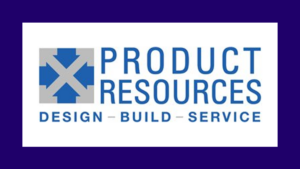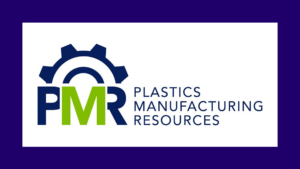5 Factors to Consider Before Scaling Up Your Process-Driven Sustainable Technology

The team of experienced engineers at Next Rung Technology, a Friend of FORGE partner, partners with growth-stage companies creating sustainable technologies to support them through the range of complex challenges faced in commercialization. In this Tools of the Trade, Next Rung Technology describes common pitfalls and useful strategies for scaling up sustainable technologies.
Scaling up a sustainable technology is very complex—you can experience many expensive pitfalls that stunt the growth of your business if you’re not nailing the details. Details become especially important when the technology is process driven, as the process can change rapidly with scale.
The team at Next Rung has 100+ years of collective experience in scaling up a variety of process-driven sustainable technologies. In this article, the team is sharing their collective knowledge on what factors you need to consider before and during the process of scaling up your sustainable technology.
Whether you’re a research team looking to expand beyond the lab, a startup who’s going beyond the prototype stage, or a more mature company who wants to take their operations to a larger scale, these are the things that you’ll want to consider to make your scale up successful.
First, we’ll start with some of the common issues companies have when scaling up.
What Can Go Wrong When Scaling Up Your Process-Driven Sustainable Technology
Company doesn’t change its organization structure and culture enough to maintain the larger scale.
When we’re working with seed-stage companies still in lab scale, the culture is very experimental and more focused on exploration rather than efficiency. While this is advantageous in the seed stage, companies need a different culture to reach and maintain the next level of scale.
A larger scale is created and maintained through balancing exploration and efficiency, and companies that successfully scale need to have leaders throughout the organization that understand both modes of operation.
Your company attempts to scale up without deep understanding and definition of current processes.
We’ve seen many companies who’re determined to scale their process to the next level, but struggle to thoroughly define their current process. This will lead to confusion, uncertainty, and large risk exposure when fleshing out the next scale of the process.
Small miscalculations at a small scale can get amplified as critical failures at a larger scale.
The process works differently at a larger scale.
When taking your process from 1L per batch to 1000L, 5000L, or 50000L per batch, many aspects of your process can change. The ratio of materials, steps required in the process, and the commercial feasibility can vary widely between each level of scale. You need to make sure that you’re able to choose the right equipment for the specific scale you desire to reach and ensure you’re integrating the changing unit economics into your business model.
If you try to scale too quickly and overlook these shifts in the process, it can result in huge mis-investments as you try to pivot your approach at a larger scale.
You look to scale before establishing your market advantage or commercial plan.
Increasing the scale of your production won’t do you any good if you’re not able to sell more product. A lot of entrepreneurs assume that bigger is better, but this is only true if you have a plan to commercialize your new technology.
The last thing you want to do is spend a lot of money on R&D and systems for scaling up then find out that there isn’t a great market to sell at scale.
As you’ve seen, many things can go awry when scaling your sustainable technology, costing your business money, time, and the chance to enter the market. But you can prevent many of these thing from happening by considering the following factors.
The 5 Factors To Consider When Scaling Up Your Process-Driven Sustainable Technology
1. Your Commercialization Plan and Market Advantage
If you reach a larger scale, how will you commercialize and turn your technology into a viable business? This is the most important question to ask before the intensive investment of resources into scaling up. You need to ensure that you’ll come out on the other side of your scale-up with a pipeline full of customers, or scaling up will be for naught and you’ll run out of resources very quickly.
Here are some questions that will help you understand your commercialization strategy:
- Who will buy our sustainable technology? Why? What value does the technology bring to potential customers?
- What is our entry point into the market? How do we fill our pipeline in order to close sales once the scale-up is complete?
- How much demand will there be for our product? How much should we plan to produce on a monthly basis?
- What’s the smallest scale we can prove commercial demand while staying financially responsible?
- What is our roadmap for scaling up? Given the demand, what scale do we need to reach, and under what timeline?
Some elements of your commercialization strategy, such as unit costs and capital requirements will change as you scale up. But before you scale, it’s essential to understand who your customers will be, why they will buy your technology, and what it takes to start selling to those customers.
2. The Flow, Equipment, and Materials, of Your Process At The Desired Scale
Before scaling, you need to have a deep understanding of your process at each level. With our clients, we start with a simple process flow diagram.
After we’ve made a process flow diagram, we get clear about the desired scale to which our clients want to scale their process. This gives us the blueprint for the next step.
After the steps of the process are mapped out and the desired scale is selected, we dive into the material balances needed to create your product, the pressures exerted at each step, and the specific equipment size and specifications needed to enable the process to flow as modeled. Usually this more advanced process design takes the form of a Piping and Instrumentation Diagram and Equipment and Instrumentation Specification Lists.
At this point, you’ll be working with crucial details that will define the equipment to invest in and how your manufacturing site might be structured. You want to make sure you’re working with an experienced process engineer or team. If you entrust this step to someone without extensive experience, you’re gambling the success of your entire scale-up process.
Here are some questions that will help you understand your commercialization strategy:
- Is it batch, semi-batch, or continuous? Will it be the same at commercial scale?
- What are the process inputs? What are the process outputs?
- What are the unit operations?
- What are the key process parameters (variables that affect the process) for each unit operation?
- Can the same unit operations work at the commercial scale?
- What are the regulatory requirements for your process?
- What are the technical risks of scaling your process?
- What are the siting requirements for your process? Are there geographical limitations?
3. How Your Process Works As an Integrated System
After going through the process just explained, You likely know in detail the operations that makeup your process at each step. But to scale successfully, you need to make sure you scale the different operations in concert.
For example, In the race to commercialize biofuels from algae, most teams scrambled to increase the scale of growth systems for the algae, but didn’t think about scaling systems for harvest and recovery.
You need to consider the inputs, outputs, how you’ll scale them in concert, and how you’ll leverage the outputs in the context of your business.
Here are a few questions to answer that will help you understand how your process works as an integrated system:
- How do the inputs relate to the outputs? How does the input/output ratio change with different scales?
- How will we effectively harvest and deliver these outputs to make them commercially available to our customers?
4. The Financial Model of Your Process
Finally, you need to get clear about the financial model around scaling up. How will this scale-up operate in the context of your company’s financial model?
We help clients with this aspect by creating a Techno-Economic Analysis. This analysis combines the detailed process information with the financial costs, risks, benefits, and uncertainties to create a projection of how your unit economics could change as different technical elements of the process change.
This Techno-Economic analysis will ensure that your financial projections are grounded in the actual technical details of the process. Without it, it’ll be very difficult to get accurate projections of the unit economics within your process.
Here are some questions that you should answer when fleshing out the financial model of your process:
- What’s the smallest scale of production needed to prove demand and commercial viability?
- What are the up-front capital requirements needed to reach that scale including labor, equipment, site selection, and contractors?
- What are the unit operating costs of creating our product at that scale including utilities, labor, equipment maintenance, the site, and materials?
- What would our price point need to be to prove commercial viability?
5. Thorough Planning Is Crucial For An Effective Scale-up and Commercialization Plan
As you’ve learned through reading this article, there’s a lot of planning, research, and preparation that’s essential to successfully scale-up your sustainable technology.
Scaling up is capital intensive which makes it inherently risky. But if you gain deep clarity on the aspects discussed in this article, you’ll be able to significantly de-risk your investment in scaling up by understanding how your process will work at the larger scale, and how it’ll integrate into your financial model.
Do you have any questions about anything discussed in this article that you want to talk about with our team of experienced process engineers and business strategists? Get in touch.





